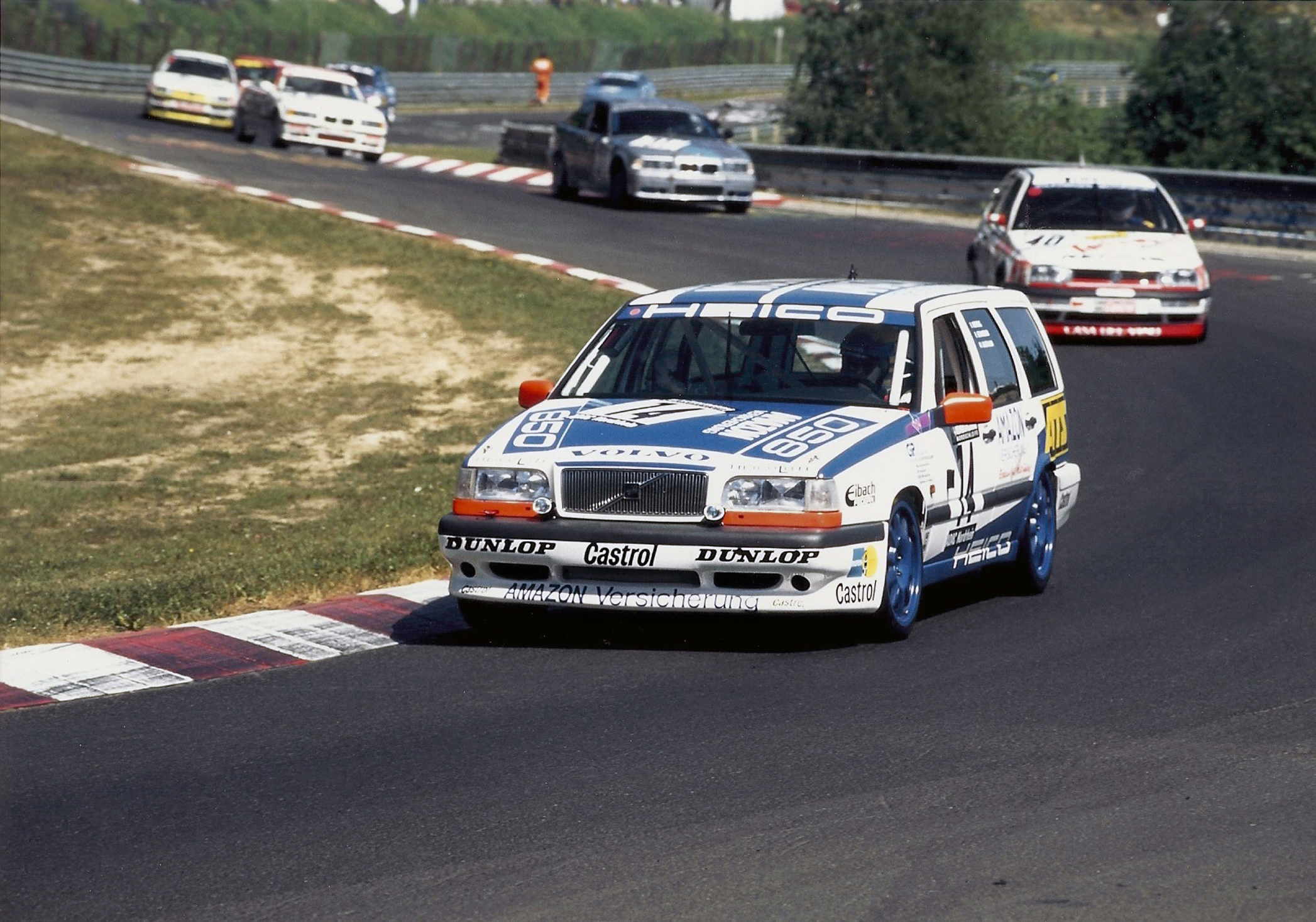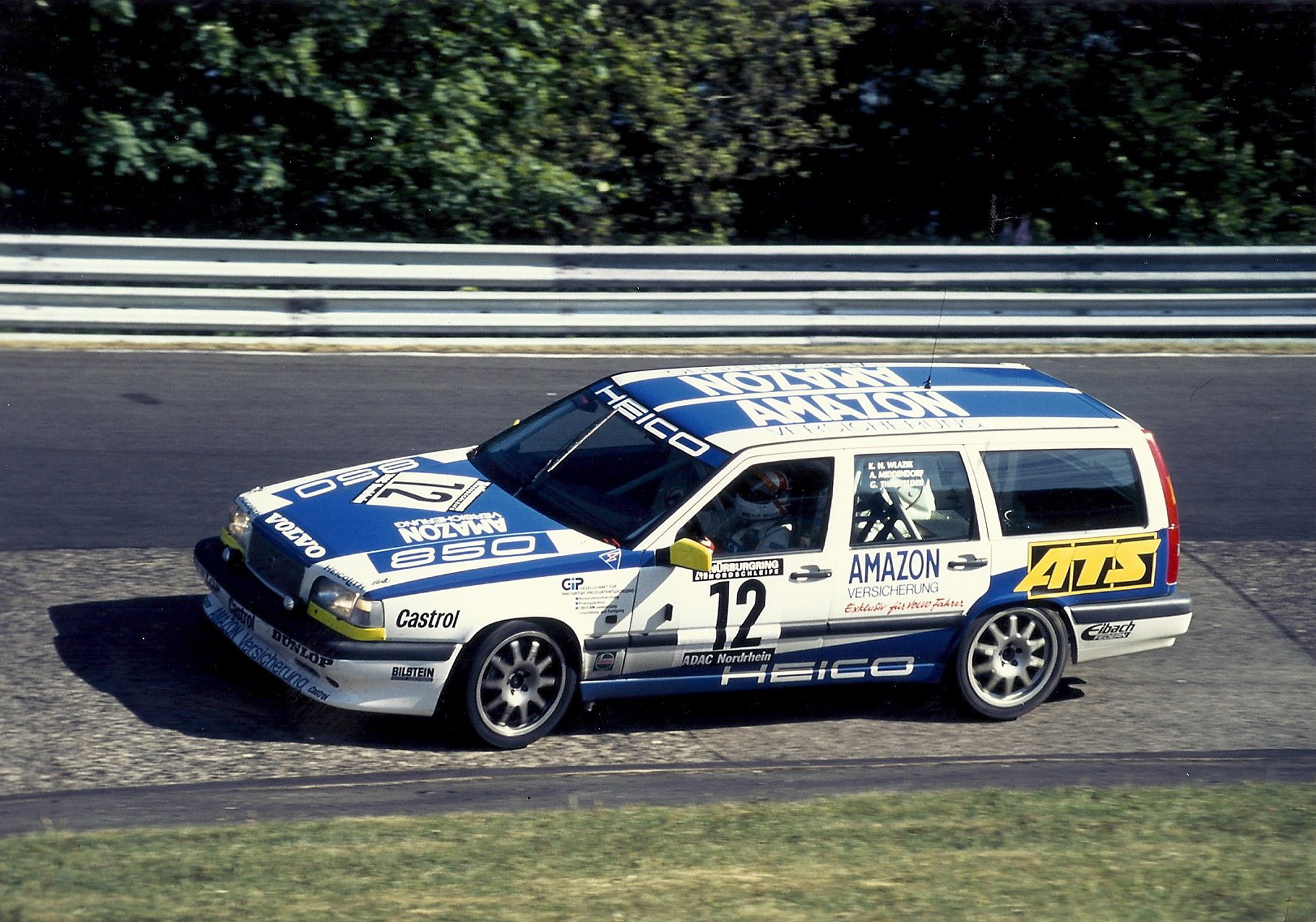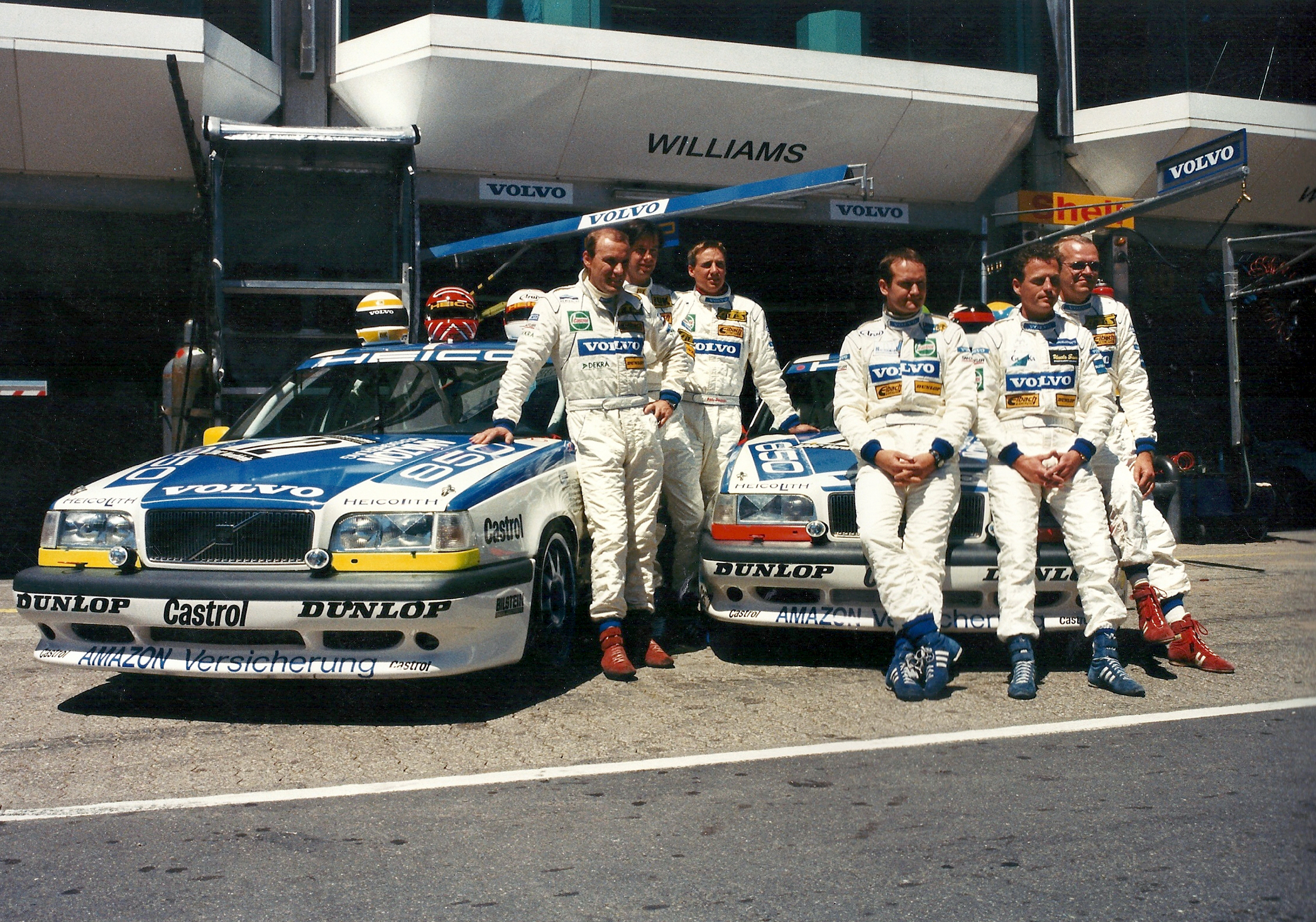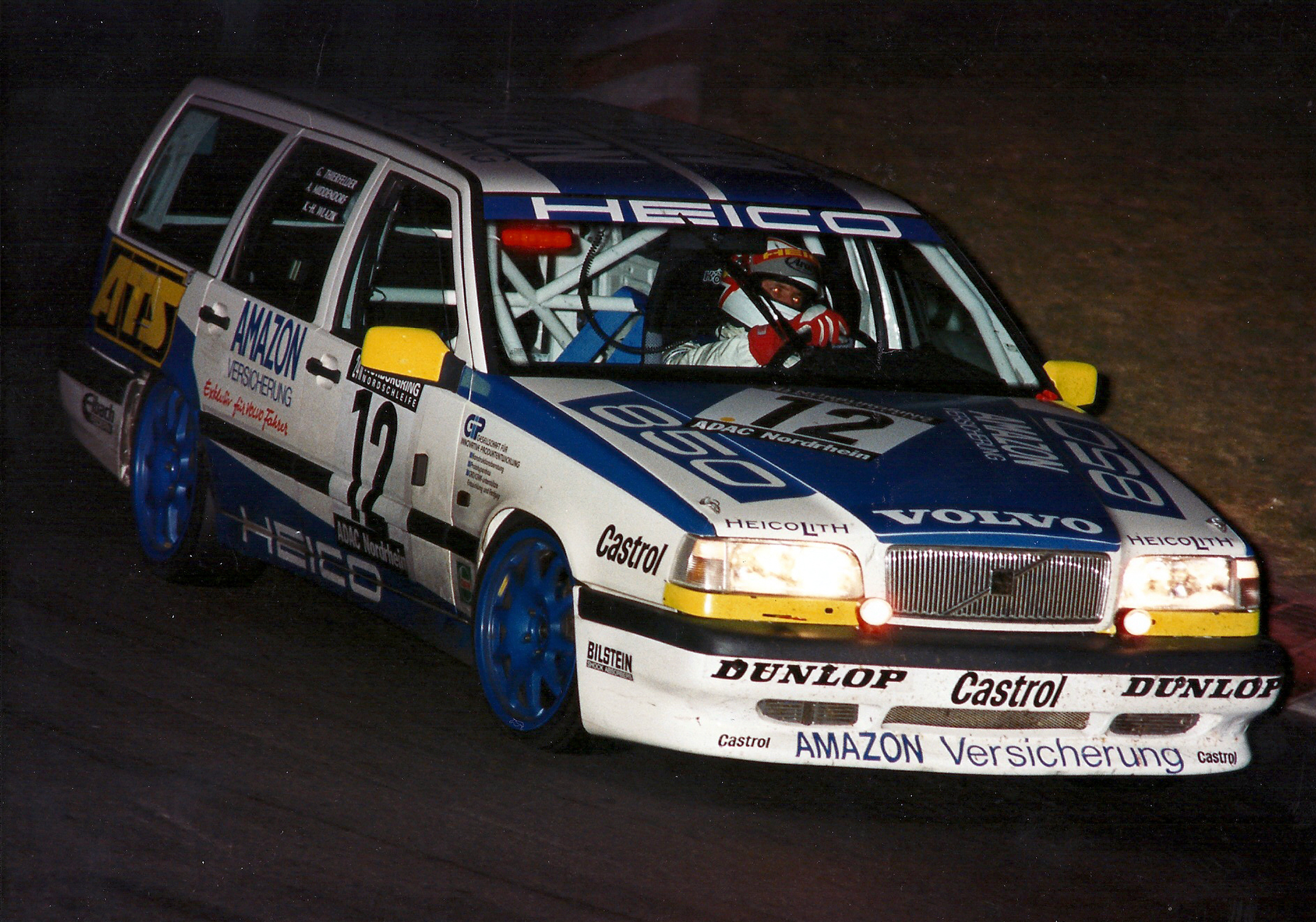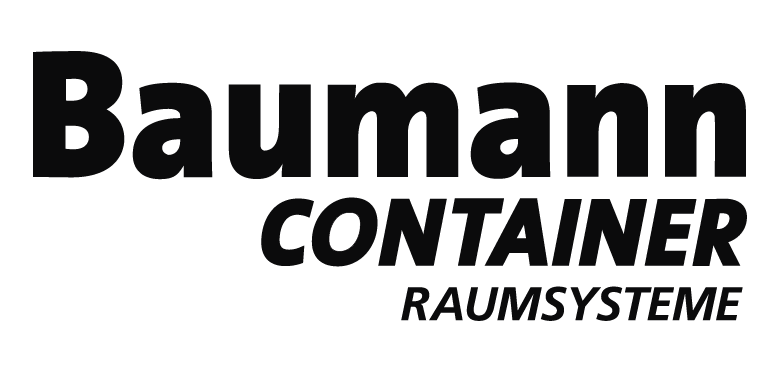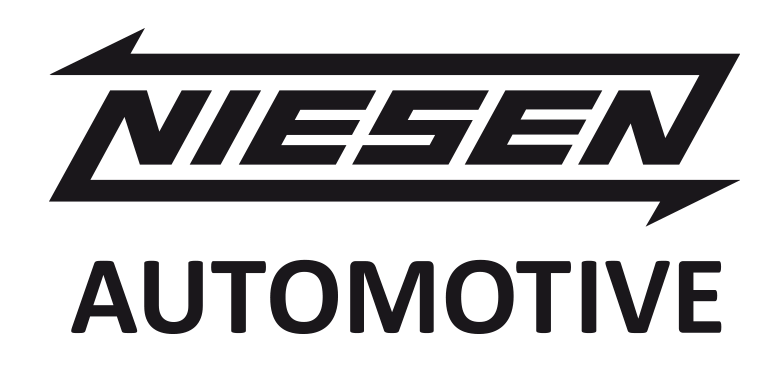History
The Volvo 850 - a look back
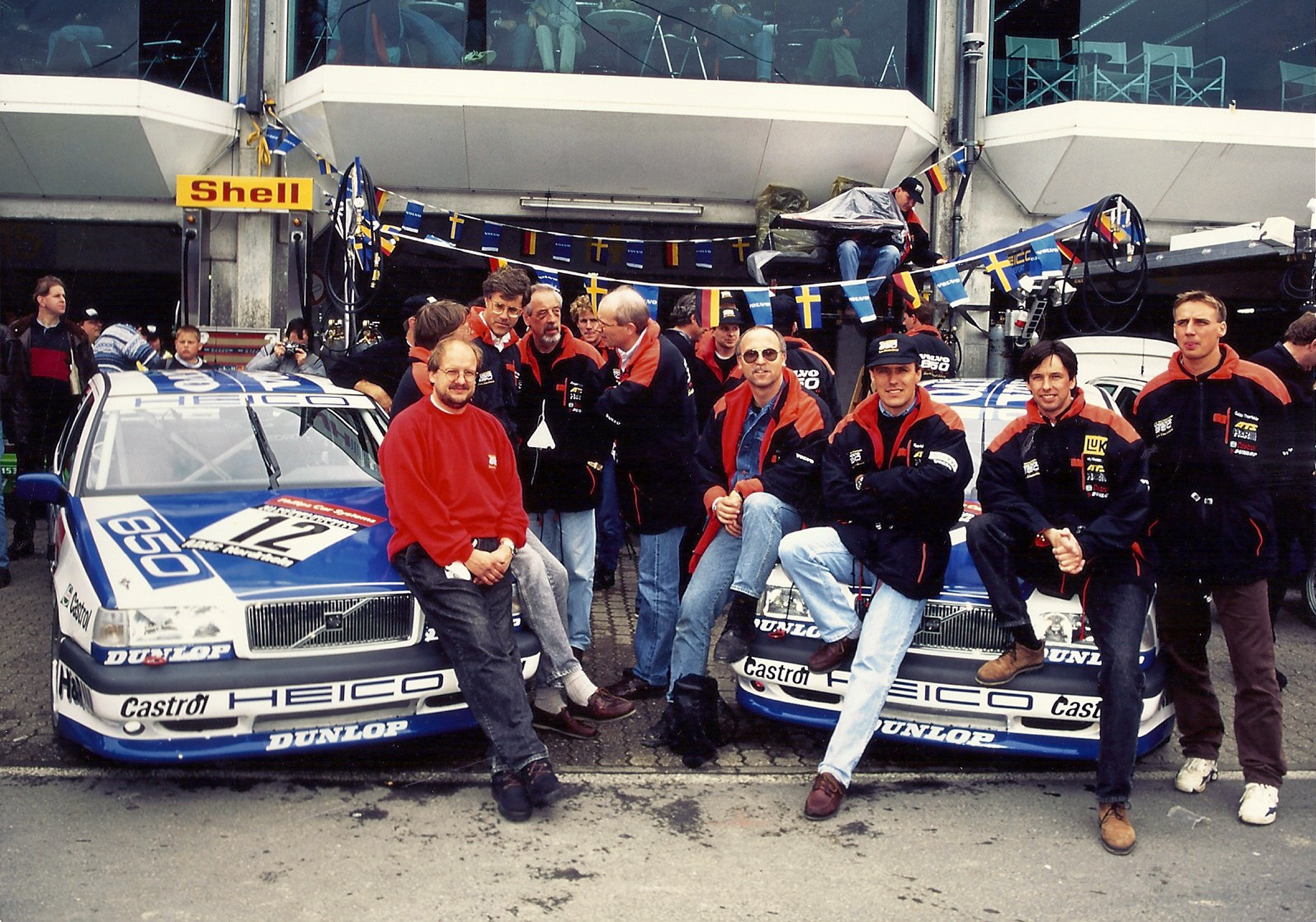
The idea
The story of these three Volvo 850 Group A cars is as clear and unambiguous as only good stories can be!
Inspired by a Group N victory of the HEICO Motorsport Wiesbaden team with a BMW M3 at the Nürburgring 24-hour race in 1994, Volvo Germany had the idea of also taking part in this race with a car. The idea was also to be realised by the same team. The idea was presented to the management by the press department and met with great approval, although it was not clear which vehicle should be used and how the whole thing could be financed.
The 850 T5
Towards the end of 1994, the 850 T5 was chosen to give this vehicle a sporty image. In England, these vehicles raced in the BTCC as a 2-litre five-cylinder, used by TWR. The financing was diverted from the advertising budget, sponsors were approached and the dealers were involved. In return for a subsidy, they were given their names on the rear doors. A major event was also planned for the 24-hour race. Time was short, there were no vehicles yet, and the Type 850 was not homologated as a turbo. This was initiated in Sweden by the manufacturer via SAM Steffansson. The first car, an 850 T5 saloon, was built in Wiesbaden from a new car that had been involved in an accident at the Belgian plant and a bodyshell that had been fitted with a cage in Sweden.
The beginning
The body was delivered on the birthday of project manager Gerd Hinkelmann and as the celebrations were also taking place at the location, the idea was born to link the chassis number to this date. So the number 18 1 95 was stamped in late in the evening. The two vehicles built later were given subsequent numbers (i.e. 18196, 18197). With great commitment, the first vehicle was entered in the first endurance cup race of the 95 season on 28 April. There was even a class victory here, but this should not hide the fact that more extensive modifications were necessary than planned.
The second vehicle under construction, the first station wagon and also delivered from Sweden as a bodyshell, had to be modified straight away. Extensive engine and gearbox modifications were required. How these were solved is a story (or several stories) of its own.
24-hour race
After much effort and travelling to suppliers in Sweden, shortly before the homologation was due to be issued by the FIA in Paris, a saloon and a station wagon were at the start of the 24-hour race in 1995 as Group A. The saloon was cancelled and the station wagon arrived. The saloon was cancelled, the estate arrived.
In 1996, another estate car, created from a new vehicle with a Matter cage, took part in the 24-hour race. The saloon was retired. Both vehicles arrived. In 1997, the two station wagons took part in the 24-hour race for the last time. One retired early with engine damage, the other saw the finish line.
Project manager Gerd Hinkelmann was able to acquire the vehicles one after the other and maintain them to this day in exactly the same condition as when they were taken off the race track. Following the extensive overhaul of all safety-relevant components by GEMEC Solutions GmbH and acceptance tests with entries in the (original) car passports, the vehicles are once again ready for use in classic racing series.
1995 to 1997
In 1995, HEICO Motorsport (Wiesbaden) developed two Volvo 850 Turbo Group A cars on behalf of Volvo Germany and ran them successfully in the 24-hour race on the Nordschleife of the Nürburgring until 1997. HEICO Motorsport (Wiesbaden) and Volvo Germany thus continued a tradition that had already caused a furore in the 1980s. In 1985, the Swede Per Stureson became German Touring Car Champion (then DPM, predecessor of today's DTM) in his Volvo 240 Turbo. For the comeback in 1995, Volvo Germany came up with something very special and launched the first racing estate car. The Volvo 850 T5 thrilled the crowds with its unmistakable five-cylinder sound and is still a household name among fans today! The "850" was driven by Wolfgang Kaufmann, Andy Middendorf, Markus Oestreich and Frank Schmickler, among others.

 English
English  Deutsch
Deutsch 